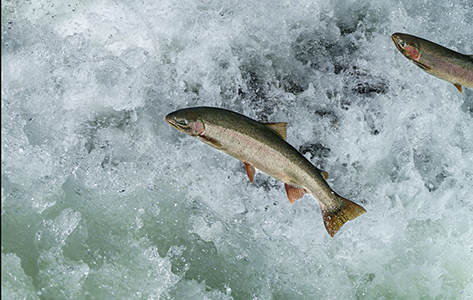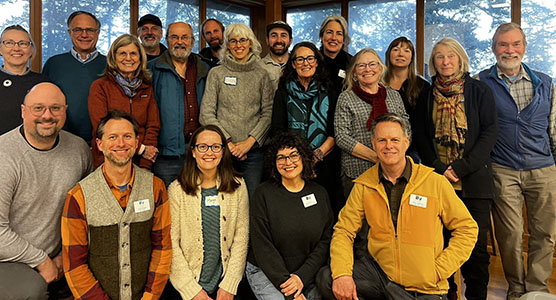Tuesday, March 15, 3:30 p.m. – 5:30 p.m., Emmanuel Episcopal Parish
— from Russel Barsh —
Soapy Seabirds theme of this year’s Tides of March!
Kwiaht and the Indian Island Marine Health Observatory open the 2016 research and educational season at Indian Island with another Tides of March event for Orcas families and children! This year’s event will be at the Episcopal Parish Hall overlooking Indian Island, from 3:30 pm to 5:30 pm on Tuesday afternoon March 15. Refreshments include a sideboard of tea and sweets. Admission is free.
Each year, the Tides of March event is an opportunity to explore a current topic in marine biology in depth, with a slideshow and displays. This year Kwiaht director Russel Barsh will unveil a consumer information campaign “aimed at suds-zero seas around the San Juan Islands” and focusing on what islanders can do to help: “use safer, simpler soap; use less; avoid outdoor use”.
Kim Freeman’s Sixth Grade class has been working with filmmaker Milla Prince, winner of the Feature Film competition at the 2015 Orcas Island Film Festival, on five shorts that explain the chemistry and environmental impacts of soap, product labels, and alternatives. An update on the film project will be accompanied by a slideshow, displays, and demonstrations for all ages, including a microscope set-up with live plankton.
Surfactants (“surface-acting agents”) include soaps, detergents, and other cleaning compounds found in every home. Surfactants are also added to pesticides and herbicides, liquid fertilizers, cosmetics, paints, and automotive fluids as emulsifiers, but are generally classified as inactive ingredients and not identified on product labels.
High concentrations of surfactants can burst sea star eggs, suffocate plankton, and rupture the gill membranes of fish, Barsh explains. Some of the emulsifiers in widespread use have also been shown to act as hormone mimics in fish. Even at very low levels, they can prevent juvenile salmon and other fish from growing normal, functional reproductive organs, making them sterile. Links to human health have also been suggested but not yet
In waters with high concentrations of surfactants, seabirds have difficulty keeping their feathers oiled and waterproof. As a result they waterlog and sink. Another seabird connection is Pacific herring, which spawn around Indian Island and Crescent Beach, and then feed on the plankton in East Sound. Oil and detergents in Eastsound storm water can reduce plankton biomass, starve herring, and leave seabirds with less to eat.
Living on islands near the shoreline, any outdoor use or disposal of products that contain surfactants is a concern. Septic systems can break down or contain surfactants, if they are maintained properly. Primary sewage treatment should remove over 90 percent of surfactants. But the inputs are very high, and surfactants continue to show up in ponds, lakes, and Eastsound street runoff, presumably from automotive drips and leaks.
You can learn more about managing our “suds stream” at the Tides of March, and if you bring a bottle of liquid soap with ingredients you don’t understand that you can live without, Kwiaht will swap it for a bar of locally handmade soap!
**If you are reading theOrcasonian for free, thank your fellow islanders. If you would like to support theOrcasonian CLICK HERE to set your modestly-priced, voluntary subscription. Otherwise, no worries; we’re happy to share with you.**







